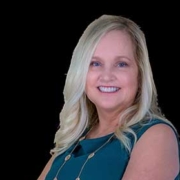My Career in Financial Planning
By Carol Schmidlin
My father, Frank J. Rozanski, was in the financial services business for most of his life. In 1970 he made what he calls his best decision, which was to go independent. He said he wanted to serve his clients’ best interest and not ones of the sales force. I admire him for this, however taking this leap while raising a family was a big step.
Of course he succeeded. Dad was very smart and loved helping people. In 1994 he told us he was going to retire. My husband Brett and I gave it some serious thought and approached him about us joining and eventually purchasing the business. He was very happy since I had no interest in it before. I had been a buyer for a department store and Brett was a state trooper and we both went to college for business. I stepped down from being a buyer due to the extensive travel and having two daughters I did not want to leave for weeks at a time.
So there began our tedious studies of the securities and insurance industry. My parents were great at helping with our children, while we could take the courses and exams necessary. They were not easy and required several hours of studying each day.
My father had a large home office at home. He would work during the day and meet two clients in the evening. We also had a home office and eventually decided that we were going to have an office outside our home. My father told us that no one would come to our office. It turned out that our clients enjoyed visiting our office and we were trying to get away from working in the evening. Brett would work in the evening, but he had a busy workload with the state police. At the time we had one employee. My father taught us what he did, however the financial planning industry was evolving and we needed to as well.
I reaped the benefits of the many study groups I became a part of and joined Ed Slott & Company. We would have two conferences a year and our heads were ready to explode with new ideas. I was very excited to get more involved in taxes and on the flight home I would write and study all the things that I learned. I shared with clients with very much enthusiasm and how they may be able to benefit.
I also got very involved working with federal employees and agencies. Our office was in South Jersey and the first federal employee I met with was in FERS. He referred a colleague, and I was dumbfounded that he was in an entirely different retirement program: CSRS.
I quickly decided that I need to become educated on Federal Employee benefits and I traveled to Colorado to take a 2-day course. We had to pass an exam and earn the title of ChFEBC℠. This was never my intention, but this really evolved. I started another business, FedSavvy Educational Solutions, which was just purely for educating federal employees. I loved teaching retirement classes.
I found myself doing a lot of retirement classes which I enjoyed, however once the pandemic hit, I had to do them on Teams and the participants were not allowed to speak -only to ask questions via digital chat messages. I stood in my office for two days talking to myself. This was a good thing because it helped me realize I needed to spend more time with my clients instead of working day and night, six days a week. I still enjoy teaching one or two classes, but I could not maintain the pace I was going.
I met a truly incredible firm at one of the Ed Slott conferences I attended. The name of the company was C2P Enterprises and what I loved about C2P is the education they provided. They had so many classes that were necessary in building my knowledge in Holistic Comprehensive Financial Planning. The founder Jason L. Smith mind never sleeps. I was already a fiduciary, and they introduced me to the National Association of Certified Financial Fiduciaries (NACFF).
NACFF was created to provide all the information, tools, and resources needed for financial professionals to ensure they are compliant with and adhering to all fiduciary standards. They have taken it a step further by providing a comprehensive fiduciary training program and certification process that will further establish qualified financial professionals as Certified Financial Fiduciaries® (CFF).
During one of the Ed Slott conferences, I noticed Jason’s book: “The Bucket Plan”. I read it and was fascinated. He had created a simplistic process to protect and grow your assets as you go into retirement and throughout retirement. This by far was the best business book I have ever read. One of the biggest mistakes people make is going directly from the accumulation phase where you are saving and trying to grow your money, to the distribution phase without having a plan. There are lots of risks in retirement: market risk, interest rate risk, healthcare and sequence of return. What is needed between the “Accumulation Phase” to the “Distribution Phase” is the “Preservation Phase”.
As Jason describes in this book, you could be Miss lucky or Mr. Unlucky. Miss Lucky retires when the stock market is doing well and withdrawals 4% a year. Later there are some big market drops but she is okay because she retired and had 3 years of great returns followed by average returns. Mr. Unlucky did not fare so well. Even though they had the same average rate of return, he retired and was hit with 3 years of bad returns, and he eventually ran out of money to support his lifestyle.
The Bucket Plan has 3 buckets:

The Now Bucket is your emergency/comfort fund as well as planned expenses. The Soon Bucket allows you to segregate between 10 to 15 years of income you will need in retirement. Every person is unique, but we find that most of our clients don’t want to take much risk but want to stay ahead of inflation. The Later Bucket allows you to continue to have growth in your portfolio and when we have a market downturn, since you are not taking withdrawals, you can recover your losses faster. This is an ongoing process. Typically, about 8 years in your advisor and you will look at your Bucket Plan. If your later bucket has grown significantly, you may wish to move some of the funds into your Soon bucket. Or you can choose to wait a few more years. I am making this sound simple, and it can be if you are working with an advisor who has gone through a series of Bucket Plan training. Before designing a Bucket Plan, we need to really get to know you. Not just your finances but what your concerns and priorities are. We do a Volatility Tolerance Analysis, which allows us to understand your investment comfort level.
I would encourage you to purchase the Bucket Plan book. We have a limited quantity that you can purchase through us for $5.00. Contact lauren@franklinplanning.com. Please click here to purchase the book on Amazon.
I am ready to share a story about a client did not follow this strategy. The client was my father. My initial mentor and a great financial planner. He retired in the late 90’s when you could pick practically any tech stock and expect double digit returns. He asked me to manage his portfolio. He was a firm believer in stocks and enjoyed growth during the 90’s. The problem was that he was now taking distributions and was 100% in stocks.
I knew the important reasons to get more conservative in retirement. I advised Dad to diversify into a more conservative portfolio. He replied: “You can’t make any money in bonds”. So, when we hit the Dot-com Bubble, and the stock market went south, he would call me every day asking how he was doing. He saw on the news that the markets were dropping and expected his portfolio to be doing okay. I told him he was down and again asked if we could make a reallocation to some more conservative investments. Once more, he denied the notion that it was a good decision. He ultimately panicked and put everything into a money market, which was the saddest moment. It took me up until two years ago to share this story because I was so proud of my father and the work he’d done over the course of his career and was embarrassed to share his retirement disaster. I think it’s important for you to know why the Bucket Plan is so important to me, and what I am so passionate in the desire to help others have a plan to protect and grow their assets for a worry-free retirement.
I will be hosting a Bucket Plan webinar, “Protecting and Growing Your Assets for a Worry-Free Retirement” on September 24th at 5:00 PM EST. Click HERE to register. We host our webinars at 5:00 EST and they are 1 hour. You can certainly reach out to us if you would like to schedule a 20-minute complimentary consultation to see if our firm would be a good fit for you.






